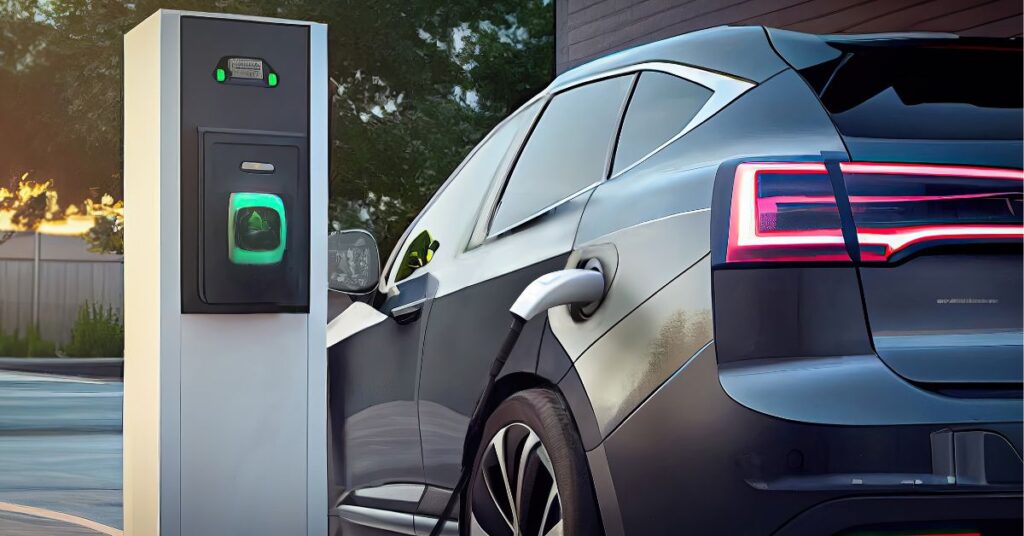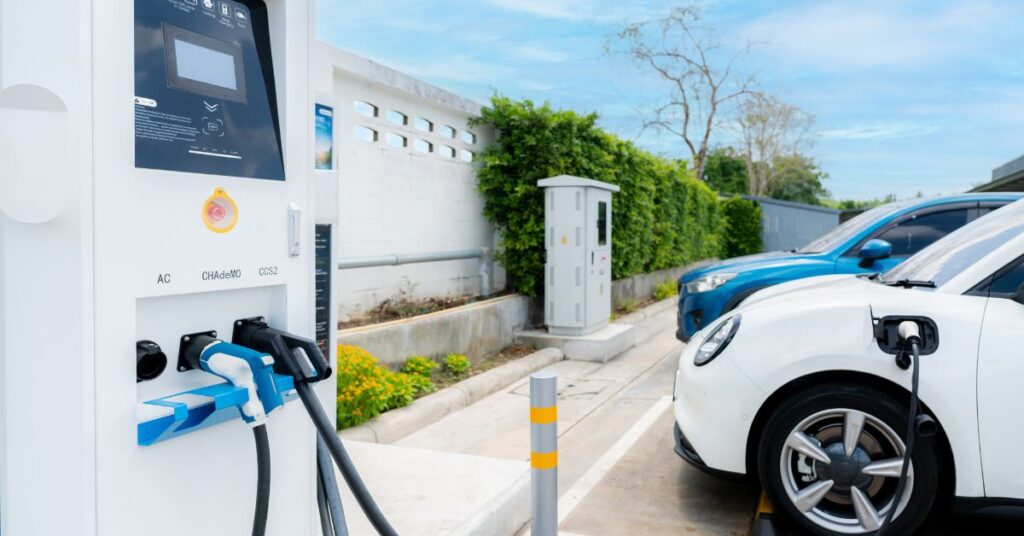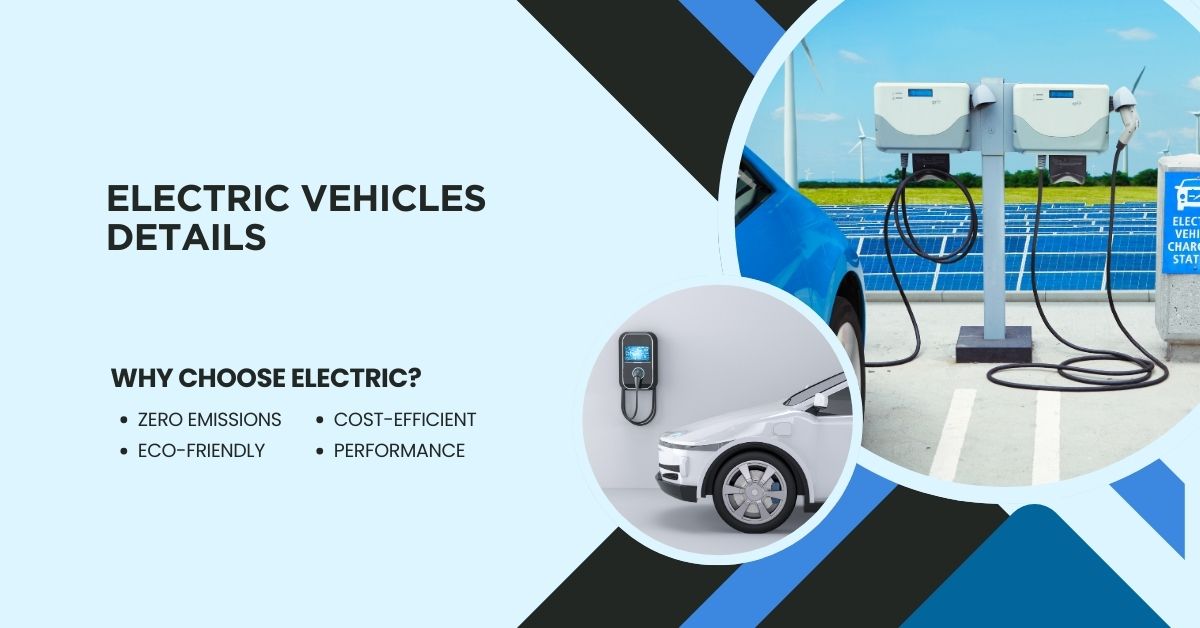Electric Vehicles Details
Know the details about Electric Vehicles Details, Discover comprehensive insights into electric vehicles with our detailed guide covering key aspects of EV technology, benefits, and environmental impact. Learn about the components, charging infrastructure, battery technology, and how electric cars contribute to a sustainable future.
Whether you’re considering buying an EV, curious about cost-saving advantages, or interested in global EV trends, our guide provides the essential information to help you make informed decisions. Stay ahead with the latest updates on advancements in EV technology, government policies, and the future of electric mobility. Perfect for eco-conscious drivers and tech enthusiasts alike, explore the future of transportation here.
Table of Contents
Electric Vehicles Details
Introduction to Electric Vehicles
Electric vehicles (EVs) represent a rapidly growing sector of the automotive industry. Driven by advancements in battery technology, environmental concerns, and supportive government policies, EVs are becoming increasingly popular worldwide. Unlike traditional internal combustion engine (ICE) vehicles that run on gasoline or diesel, EVs operate on electricity, either stored in batteries or generated by fuel cells.
EVs offer numerous advantages over conventional vehicles. They are cleaner, quieter, and often more economical. From a global perspective, they are central to the effort to reduce greenhouse gas emissions and combat climate change, promising a sustainable future for mobility.
Types of Electric Vehicles

- Battery Electric Vehicles (BEVs)
BEVs are fully electric vehicles powered entirely by electricity stored in onboard batteries. These vehicles do not use any fossil fuels, making them emissions-free during operation. BEVs are recharged by plugging into the electric grid, either at home, at work, or at charging stations. - Plug-in Hybrid Electric Vehicles (PHEVs)
PHEVs use both an electric motor and an internal combustion engine. These vehicles can run on electric power alone for a limited range, after which the combustion engine takes over. PHEVs offer flexibility, as they can operate on electricity in urban settings and switch to gasoline for longer trips, extending range without the need for frequent recharging. - Hybrid Electric Vehicles (HEVs)
HEVs combine an internal combustion engine with an electric motor, but unlike PHEVs, they do not plug in to recharge. Instead, they rely on regenerative braking to recharge the battery. HEVs offer improved fuel economy compared to traditional ICE vehicles, though they are not considered fully electric. - Fuel Cell Electric Vehicles (FCEVs)
FCEVs use hydrogen fuel cells to generate electricity, powering an electric motor. They emit only water vapor as a byproduct, making them environmentally friendly. While FCEVs hold great potential for longer ranges and quick refueling times, the availability of hydrogen refueling infrastructure remains a significant barrier to widespread adoption.
Electric Vehicle Components and Technology
- Battery Packs
The battery is the heart of any EV, storing the energy required for propulsion. Most modern EVs use lithium-ion batteries due to their high energy density, longer lifespan, and relatively low weight. Battery capacity is measured in kilowatt-hours (kWh) and directly impacts the vehicle’s range on a single charge. Advancements in battery technology, such as solid-state batteries, are expected to increase efficiency and reduce costs further. - Electric Motors
EVs use one or more electric motors to drive the wheels. These motors convert electrical energy from the battery into mechanical energy, propelling the vehicle. The two main types of motors used in EVs are AC induction motors and permanent magnet motors. Electric motors are generally more efficient than internal combustion engines, as they can deliver maximum torque instantly without requiring gears. - Charging Infrastructure
Charging infrastructure is critical for the widespread adoption of EVs. Charging stations come in three main levels:- Level 1: Standard 120-volt outlets that charge an EV slowly, providing around 4-5 miles of range per hour.
- Level 2: 240-volt outlets, commonly found in public and residential charging stations, providing about 25 miles of range per hour.
- Level 3 (DC Fast Charging): Specialized high-power stations that can charge an EV up to 80% within 30 minutes, depending on the vehicle’s battery capacity.
- Regenerative Braking Systems
Regenerative braking is an essential feature in EVs that allows the vehicle to recover energy during deceleration. Instead of dissipating kinetic energy as heat, regenerative braking captures this energy and converts it into electricity to recharge the battery. This technology helps increase the efficiency and range of EVs by recapturing energy that would otherwise be lost. - Onboard Chargers and Inverters
The onboard charger converts alternating current (AC) from the charging station to direct current (DC) for storage in the battery. Additionally, an inverter is used to convert the DC electricity stored in the battery to AC for the electric motor.
Advantages of Electric Vehicles

- Environmental Benefits
EVs produce zero tailpipe emissions, helping to reduce air pollution and greenhouse gas emissions. Even when accounting for emissions from electricity generation, EVs generally have a smaller carbon footprint than ICE vehicles. As the electric grid shifts to renewable sources like solar and wind, EVs will become even more environmentally friendly. - Cost Savings
While the initial cost of an EV may be higher than a comparable ICE vehicle, EV owners typically save money in the long run. Electricity is the cheaper than gasoline on a per-mile basis, and EVs have to the fewer moving parts, which reduces maintenance costs. Over time, the total cost of ownership for an EV can be lower than that of an ICE vehicle. - Energy Efficiency
Electric motors are more efficient than internal combustion engines, converting a higher percentage of electrical energy into motion. This efficiency translates into better performance and lower energy consumption. - Performance
EVs offer smooth, quiet, and instant acceleration due to the characteristics of electric motors. With fewer moving parts, they are less prone to mechanical issues and offer a more reliable driving experience.
Challenges and Limitations of Electric Vehicles
- Range Anxiety
One of the most common concerns among potential EV buyers is range anxiety, the fear of running out of power before reaching a charging station. Although modern EVs have improved range (often over 250 miles per charge), this limitation remains a barrier, especially for those in rural or remote areas. - Charging Time
Charging an EV is generally slower than refueling a gasoline vehicle. While fast-charging options exist, they are not as widely available as regular charging points, and even fast charging can take 30 minutes or more for an 80% charge. The development of ultra-fast charging and solid-state batteries is expected to address this issue. - Charging Infrastructure
While EV charging networks are expanding, there are still gaps in infrastructure, especially in rural or underdeveloped regions. Investment in charging stations and standardization across networks will be necessary to make EVs viable for all consumers. - Battery Degradation
Over time, EV batteries lose capacity, which reduces range. Factors like extreme temperatures and frequent fast charging can accelerate battery degradation. However, advances in battery chemistry and thermal management systems are improving battery longevity. - Initial Purchase Cost
Although EV prices are decreasing, they still tend to be more expensive upfront than ICE vehicles. This cost is primarily due to the high price of battery packs. Government incentives and decreasing battery costs are helping to bridge this gap, but affordability remains a challenge for many consumers.
Global Electric Vehicle Market Trends
- Increasing Demand
The demand for EVs is on a steep rise due to factors like consumer awareness, technological improvements, and supportive policies. Regions like Europe and China lead the market, with aggressive targets for phasing out fossil-fuel-based vehicles and promoting EV adoption. - Government Policies and Incentives
Many governments offer subsidies, tax breaks, and other incentives to encourage EV adoption. Additionally, countries worldwide are implementing stricter emissions regulations, which push automakers to shift to EV production. Some cities and countries have announced bans on new ICE vehicle sales by 2030 or 2040, accelerating the transition to electric mobility. - Emergence of New EV Manufacturers
While traditional automakers are investing heavily in EV technology, new entrants, especially startups focused on sustainable technology, are disrupting the market. Companies like Tesla, Rivian, and NIO are gaining traction, pushing innovation and competition in the industry. - Battery Technology Advancements
The EV market is being transformed by improvements in battery technology. Innovations like solid-state batteries, which offer higher energy density and faster charging, promise to revolutionize the EV industry. Additionally, battery recycling and second-life applications for used batteries are becoming critical areas of focus.
Future Outlook for Electric Vehicles

- Autonomous Electric Vehicles
Autonomous (self-driving) vehicles are expected to become a significant part of the future transportation landscape. Autonomous EVs can improve road safety, reduce traffic congestion, and enable new mobility solutions such as robo-taxis. Companies like Tesla, Waymo, and Cruise are pioneering efforts to integrate autonomous technology with EVs. - Expansion of Renewable Energy Charging Solutions
As the world shifts to cleaner energy sources, EV charging stations powered by solar, wind, or other renewable energy sources are expected to become more common. Integrating EVs with smart grids, which allow energy to flow between the grid and EVs, can create a more efficient, resilient, and sustainable energy system. - Vehicle-to-Grid (V2G) Technology
V2G technology allows to the EVs to return electricity to the grid, effectively turning them into mobile energy storage units. During peak demand, V2G-enabled EVs could supply power to the grid, reducing the need for traditional power plants and enhancing grid stability. - Focus on Sustainability
Future developments in the EV industry will prioritize sustainability, not only in terms of vehicle emissions but also through the use of sustainable materials and recycling processes for batteries. Reducing the carbon footprint of EV production will be essential for the industry to meet environmental goals.
FAQs About Electric Vehicles Details
Conclusion
Electric vehicles are at the forefront of the transition to sustainable transportation. As battery technology continues to improve, charging infrastructure expands, and costs decrease, EVs are becoming more accessible to a wider audience. Despite current challenges such as range limitations, charging time, and initial costs, the outlook for EVs is bright, with governments, automakers, and consumers increasingly committed to an electric future. With the potential to transform not only the automotive industry but also the global energy landscape, electric vehicles represent a cornerstone in the fight against climate change and the push for a sustainable future.
